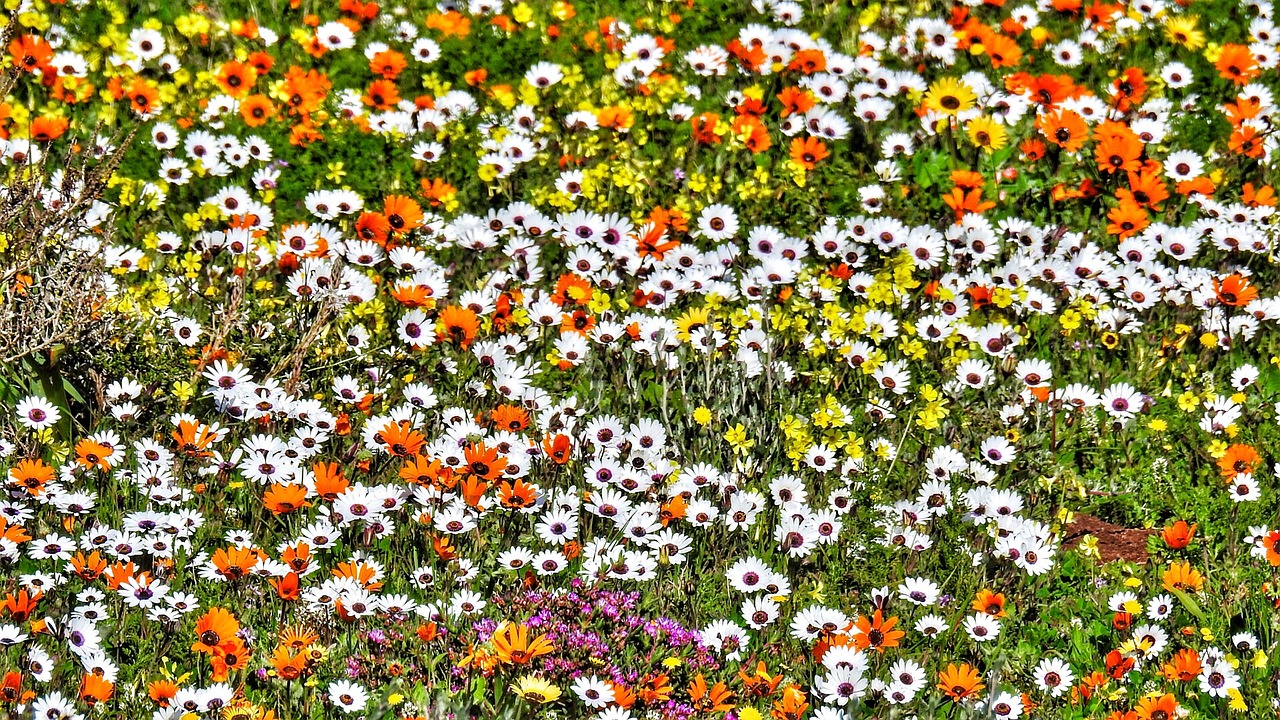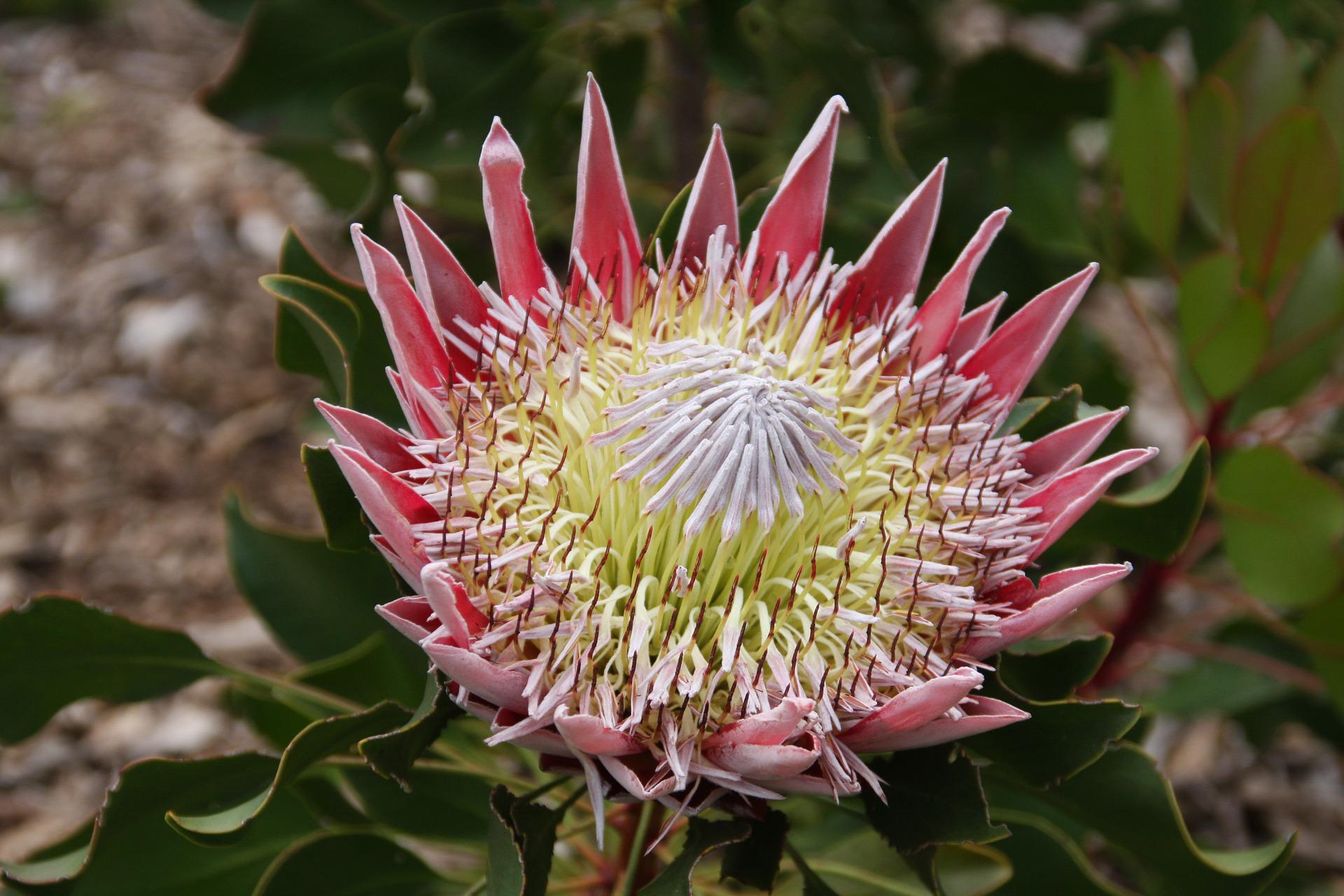4 Barnard St, Rondebosch, Cape Town, 7700
Call Craig: +27 82 091 7983 | Email: craig@southernafricantours.com
Call Bianca: +27 74 957 0355 | Email: bianca@southernafricantours.
South African Private Safaris & Self-drives | Southern African Tours
Safari Tour Company in Cape Town South Africa
SEARCH TOURS
Cape Floral Kingdom (Fynbos) and West Coast Flower Season
Flowers in a variety of colors, shapes, and sizes burst into color each spring along the West Coast of the Cape Province in South Africa. The best time to see these beautiful Namaqualand daisies is usually mid to late August and they continue flowering into September. The best place to see them in their natural surroundings is the West Coast National Park.
One section of the park, the Postberg Reserve, is closed year-round – and only open to the public during the flowering season. Our guided tours are available as a one-day and multi-day trip.

The Namaqualand Daisy (Dimorphotheca sinuata) usually flowers at about the same time as many of the species of Proteas, Ericas (heaths), and Restios (Cape Reeds) in the Fynbos Biome. Of all plant kingdoms (biomes) on this planet, the Cape Fynbos has the largest variety of plants BUT it is almost the smallest in terms of land where it grows. Imagine that. More species of plants than the entire South America Amazon forest – or all of Europe and Asia – all packed into the space of a small area the size of Israel.
There are numerous Biospheres, Reserves, and peri-urban settlements in the Western Cape that are devoted to the conservation of indigenous plants and animals – with a metropolitan city that needs more space for people to live and work. Environmental efforts to preserve the natural habitat of nearly 9000 species of plants have been applauded and celebrated with pride by South Africans and the international
community.
The fynbos (fine bush from Afrikaans) generally describes plants that are adapted to this unique geological area which is described as The Mediterranean. Table Mountain National Park is home to some 3550 species alone. Some species of plants cannot survive below a certain altitude. Some species occur only on the leeward slopes of the mountains. Some only call their home on the cliff faces. In the spring and early summer months, fynbos has a unique scent that easily is on
a bucket list of world scents.

Proteas seem to be the most well-known plant from Cape Town. There are 114 protea species. It’s also known as a sugarbush to some – although the extraction of sugar from proteas no longer occurs. Proteas are the flag carriers for the Fynbos kingdom and the King Protea has also been celebrated by the South African National Cricket team who honor these plants by carrying their name. A trip with a knowledgeable guide can expose you to quite a few proteas – as some
species flower all year round.
One species of protea that is easily viewed on the slopes of Signal Hill is a tree, called the Silver Tree (Leucadendron argenteum). Their lifespan is 20 years – and due to the recent fires on Table Mountain and Signal Hill, when nearly 74% of these trees were burnt, they are extremely endangered. The current Silver Trees are mostly between 5 and 15 years old. The pincushion protea is a delight to see and has been adaptable enough to be agriculturally grown for flower sellers to sell. There are 48 species of pincushion proteas – and they are
interestingly hermaphrodites.
One type of Cape Reed, Restio Micans Nees, is on the Red List – and its habitat is decreasing. It occurs only between Malmesbury and False Bay – and usually next to streams in sandy acidic soil. The Cape Flats and Atlantis Fynbos areas are these rare reeds last remaining hope. The major threat to their survival is that they occur in areas where “shacks” are put up by migrants and the homeless – next to streams. In this very sad state of affairs, both plants and humans are fighting for survival.
A species of orchid that occurs in the Fynbos kingdom is known as the Disa. There are 182 species of Disa in the world – and most of them only can be found in the western Cape. They do not grow easily, require elevation and very specific climate conditions to grow. Amazingly beautiful, and usually only found on quite challenging hiking trails, these very protected species are best seen and photographed in the company of a specialist adventure or field guide.
I’m happy to say that our private guided safaris offer unbeatable value. We are owner/guides, which means you shall experience Africa with a dedicated and enthusiastic team. Call Craig +27 (0)820917983




